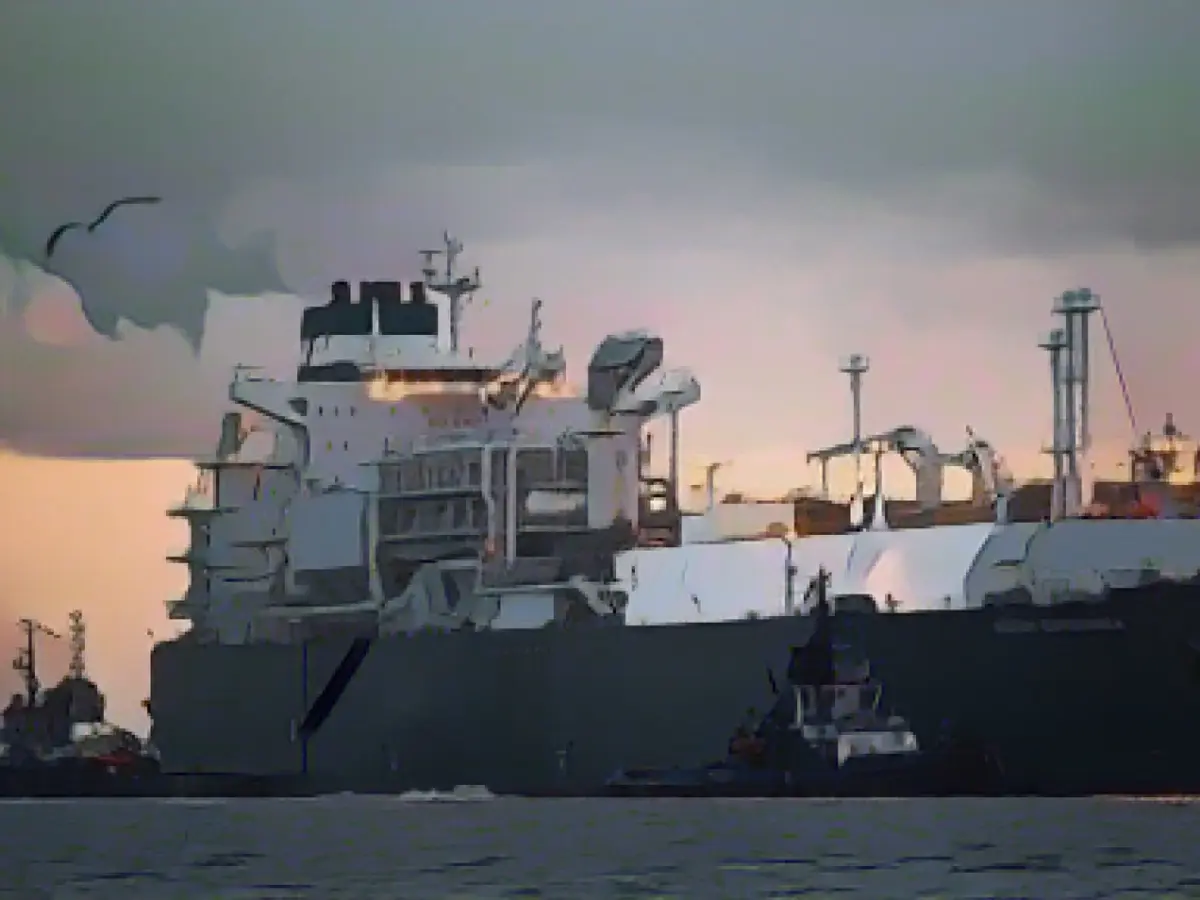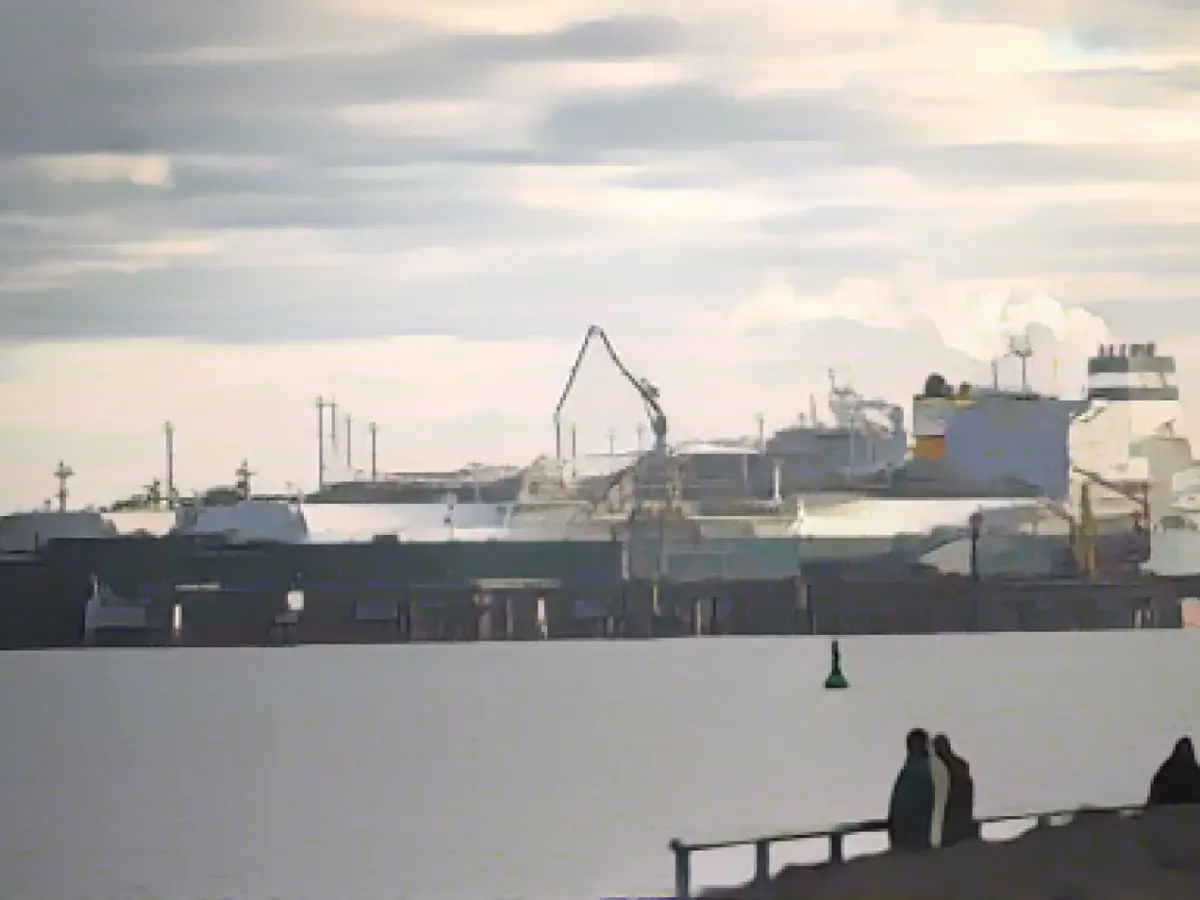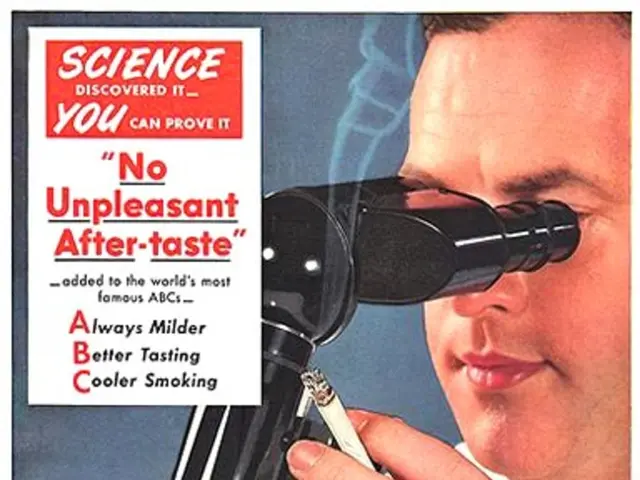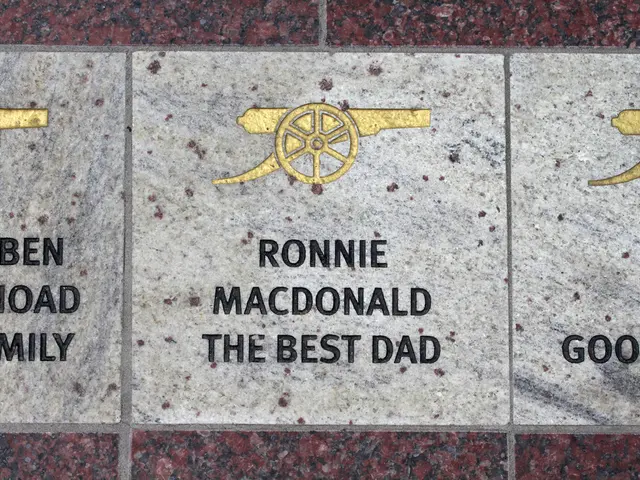LNG Terminal's Chlorine Conundrum: Uniper's Minimization Strategy
The Wilhelmshaven floating LNG terminal's reliance on chlorine for biofouling prevention remains a contentious issue. Uniper, the operational giant, showcased a minimization plan aimed at decreasing chlorine use in the summer of 20XX, following criticism from environmentalists and local interest groups. Despite exploring over twenty potential cleaning alternatives, the report suggested that only chlorination effectively combats marine growth in the ship's seawater systems.
Chlorine as a Biofouling Deterrent
The process of reversing liquefied natural gas (LNG) back to its gaseous state on board requires ocean water heating. Notably, this could allow microorganisms and shellfish to thrive, leading to an undesired growth in pipe systems. Chlorination, with chlorine serving as the active biocide, addresses this challenge by combating algae and mussel growth in the ship's seawater systems. The process involves conversion of sodium chloride present in ocean water into active chlorine through electrolysis.
Critics of Chlorine Discharge
Major concerns revolve around the continuous discharge of chlorinated wastewater into the Jade. Environmental organizations, locals, and mussel fishermen argue that the relentless discharge of chlorine might inflict lasting damage on nature and aquatic life, even reaching the adjacent Wadden Sea. Officially, water samples demonstrating chlorine levels below the permissible limit have been reported, although a reduction requirement stipulated by the approval authority NLWKN called for minimizing chlorine use.
Uniper's Proposed Minimization Approach
In the proposed strategy, Uniper suggests adopting what is termed as "shock chlorination." Instead of continuous application, this method prescribes the use of chlorine only in instances where the growth pressure of microorganisms necessitates it. Uniper estimates that this could cut chlorine use by 30-50%, depending on the ship's environmental conditions. Tests are currently being conducted to evaluate the strategy's feasibility.
Alternatives to Chlorine
Uniper has consistently rejected converting to ultrasonic cleaning, as advocated by environmental activists and planned for the second LNG terminal ship in Wilhelmshaven by Tree Energy Solution consortium. Despite unresolved questions about ultrasonic applications, the company still favors waiting for its implementation on the second terminal ship, scheduled for 2024.
Hanover's Ministry of the Environment insists on the prompt transition to a chlorine-free cleaning strategy. Environment Minister Christian Meyer (Green Party) calls for the rapid implementation of ultrasonic technology if it is proven viable. The budget committee of the Bundestag has earmarked funds for such conversions.
Two vital stepping stones have been highlighted by Meyer. First, halving the chlorine usage through a shock chlorination method is recommended. Second, the approval authority (NLWKN) is still evaluating Uniper's minimization concept, which includes a proposed twelve-month trial period to commence in 2024.
Enrichment Insights
Given the issues presented in the base article, relatively minor alterations to the existing chlorine-based cleaning procedure could potentially suffice. Alternatives like ultrasonic antifouling technology, biomimetic coatings, and reverse osmosis membranes display their promise in preventing biofouling, with minimal environmental harm, as they address the growth of microorganisms without resorting to harmful chemicals like chlorine. Additionally, the use of alternative technologies such as these has the benefit of reducing operational expenses and contributing to sustainability goals worldwide.





